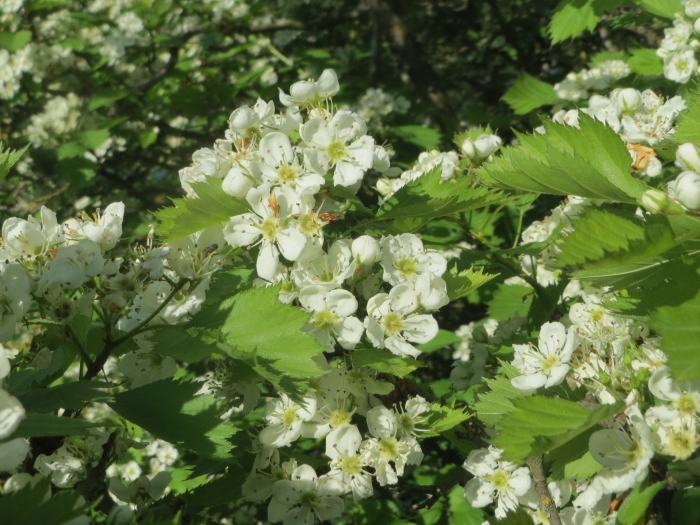Wild Service Tree
(Sorbus torminalis)
Wild Service Tree (Sorbus torminalis)
/
/

Andreas Rockstein
CC BY-SA 4.0
Image By:
Andreas Rockstein
Recorded By:
Copyright:
CC BY-SA 4.0
Copyright Notice:
Photo by: Andreas Rockstein | License Type: CC BY-SA 4.0 | License URL: http://creativecommons.org/licenses/by-sa/4.0/ | Rights Holder: Andreas Rockstein | Publisher: iNaturalist | Date Created: 2017-04-21T10:09:45-07:00 |







































































Estimated Native Range
Summary
Sorbus torminalis, commonly known as Wild Service Tree, Chequers, or Checker Tree, is a deciduous tree belonging to the mountain ash or rowan genus within the Rosaceae family. It typically grows to a height of 15–25 m (50–80 ft) with a trunk diameter up to 1.3 m (4 ft 3 in). The bark is smooth and greyish, peeling away in squarish plates to reveal darker brown layers underneath. The leaves are lobed and turn a rich, golden color in autumn. Its white flowers bloom in late spring to early summer and are followed by small, brownish fruits that are appreciated by wildlife. Native to a variety of habitats including ancient woodlands, hedgerows, and forest margins across Europe, it is particularly associated with calcareous soils but can tolerate a range from chalky and dry to temporarily waterlogged conditions.
The Wild Service Tree is valued for its ornamental features, including its attractive bark, lobed leaves, and autumn coloration. It is suitable for planting in parks and large gardens, and its fruits are beneficial for wildlife. In cultivation, it prefers full sun to part shade and requires medium amounts of water, with adaptable drainage preferences ranging from slow to fast. While it is not commonly afflicted by diseases, it can be susceptible to fireblight and canker. The tree is also known for its hard, fine-grained wood, used in cabinet making and turnery.CC BY-SA 4.0
The Wild Service Tree is valued for its ornamental features, including its attractive bark, lobed leaves, and autumn coloration. It is suitable for planting in parks and large gardens, and its fruits are beneficial for wildlife. In cultivation, it prefers full sun to part shade and requires medium amounts of water, with adaptable drainage preferences ranging from slow to fast. While it is not commonly afflicted by diseases, it can be susceptible to fireblight and canker. The tree is also known for its hard, fine-grained wood, used in cabinet making and turnery.CC BY-SA 4.0
Plant Description
- Plant Type: Tree
- Height: 50-70 feet
- Width: 35-50 feet
- Growth Rate: Moderate
- Flower Color: White
- Flowering Season: Spring
- Leaf Retention: Deciduous
Growth Requirements
- Sun: Full Sun, Part Shade
- Water: Medium
- Drainage: Slow, Medium, Fast
Common Uses
Bird Garden, Edible*Disclaimer: Easyscape's listed plant edibility is for informational use. Always verify the safety and proper identification of any plant before consumption.
Natural Habitat
Ancient woodlands, hedgerows, and forest margins, often on calcareous soils
Other Names
Common Names: Checkertree, Elsbeere
Scientific Names: , Sorbus torminalis, Torminalis glaberrima, Pyrus torminalis, Crataegus torminalis, Mespilus torminalis, Sorbus orientalis, Sorbus torminalis var. pinnatifida, Torminaria clusii, Torminalis clusii
GBIF Accepted Name: Torminalis glaberrima (Gand.) Sennikov & Kurtto